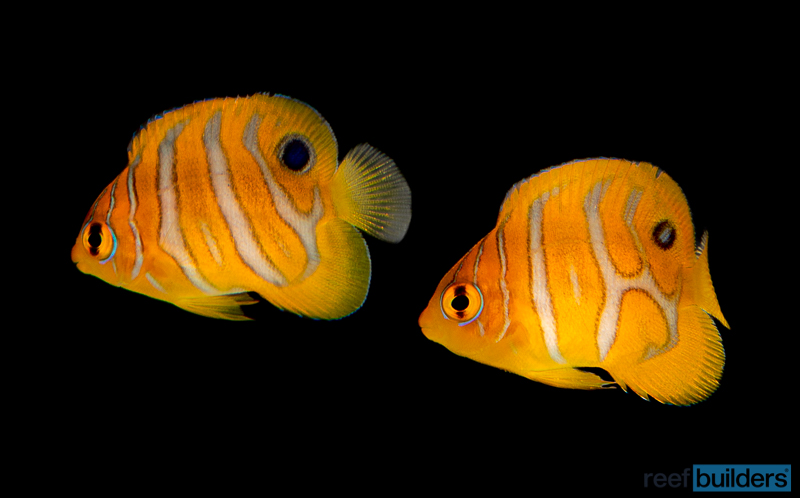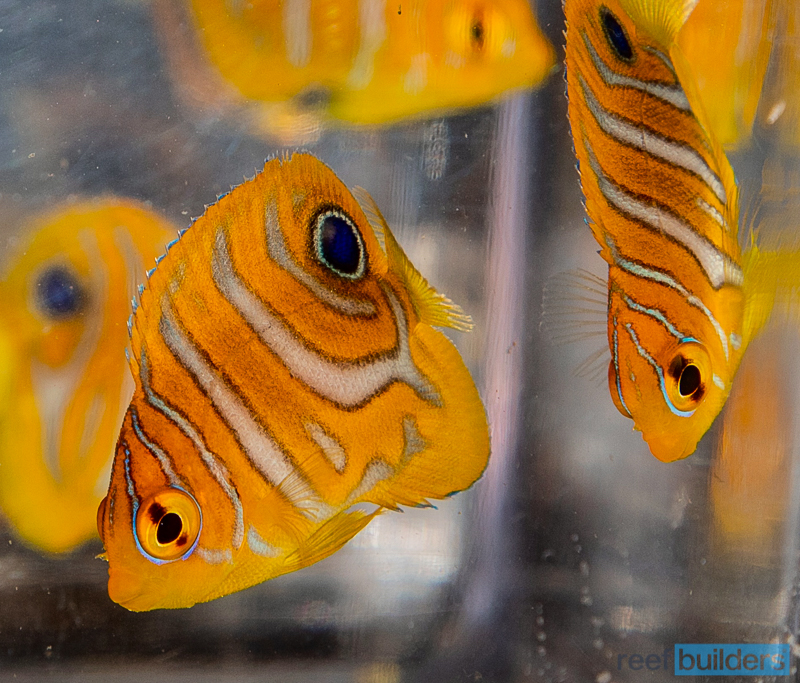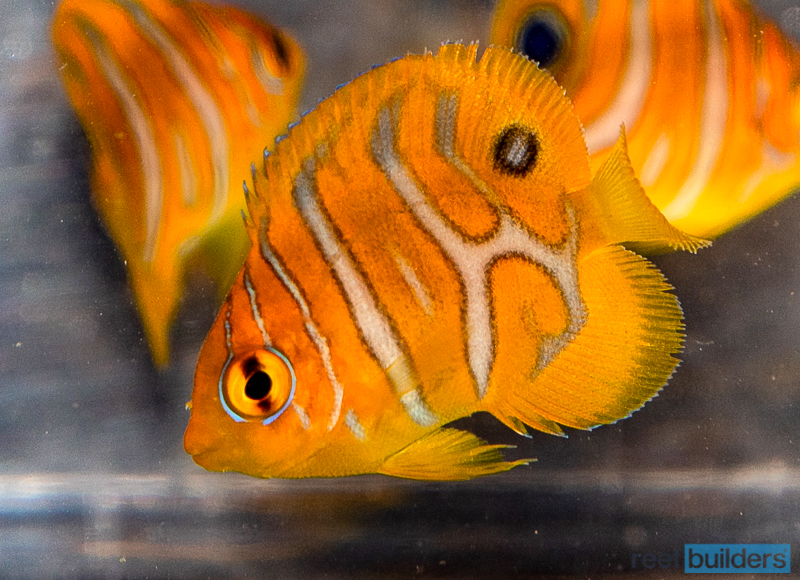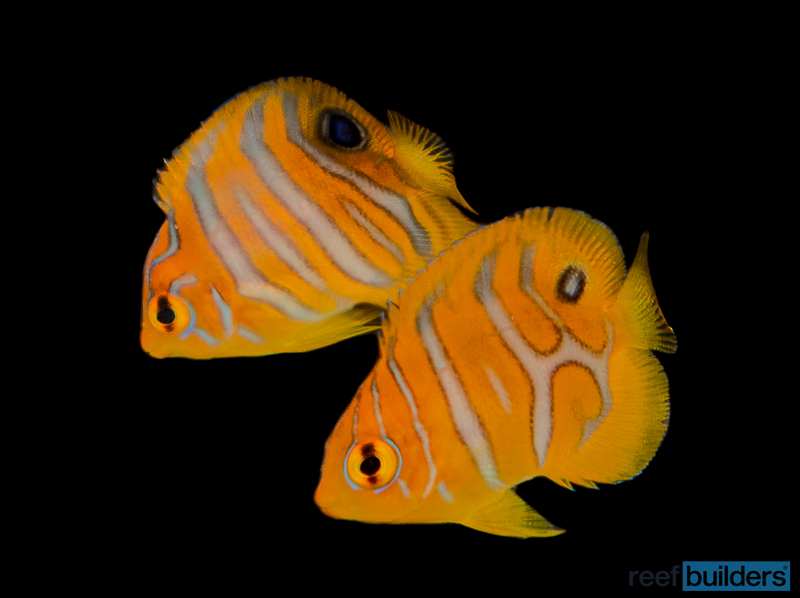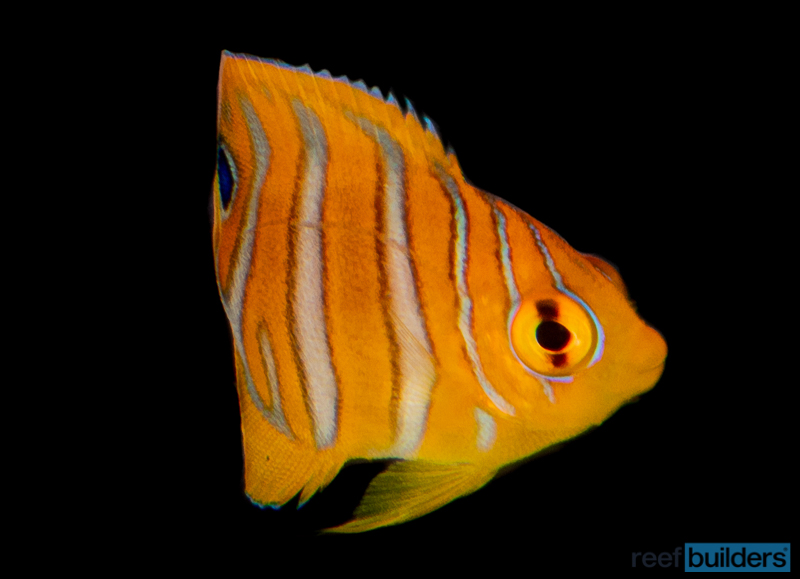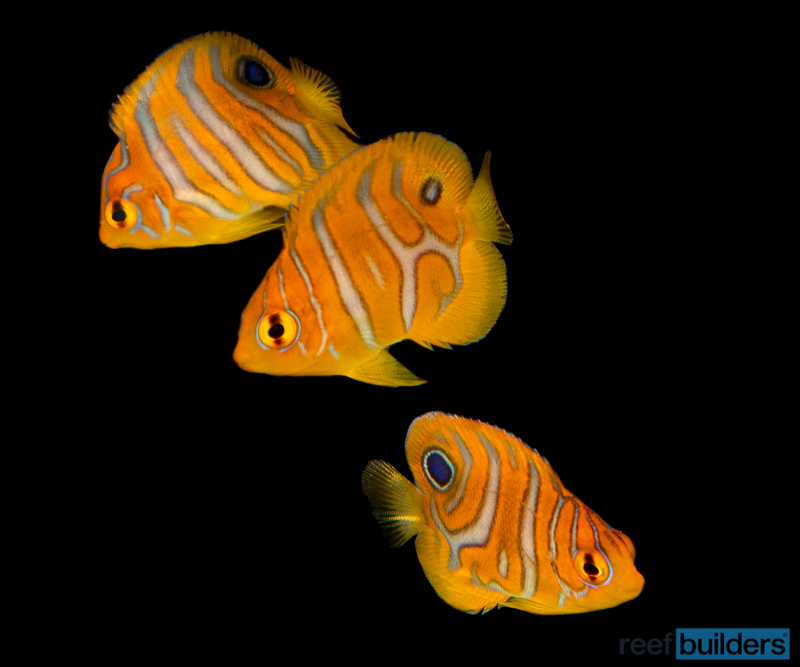Regal angelfish are one of the most unique of all angelfish being the only species belonging to a monotypic genus, Pygoplites, and also the only angelfish to have two described subspecies, a rare designation among marine fish. It was nearly three years ago that we had the pleasure of reporting on the first captive bred regal angelfish from Bali Aquarich and after years of refinement including a second generation of captive bred fish we are finally beginning to see these fish enter the hobby.
One of the first companies in the U.S. to get their hands on the cultured regal angelfish from Bali is Marine Collectors who shared these close up images of the gorgeous baby Pygoplites and boy are they cute! These F2 cultured regal angelfish are the Indian Ocean, yellow belly subspecies Pygoplites diacanthus flavescens which is reflected in the dominant golden yellow color of these aquacultured angelfish.
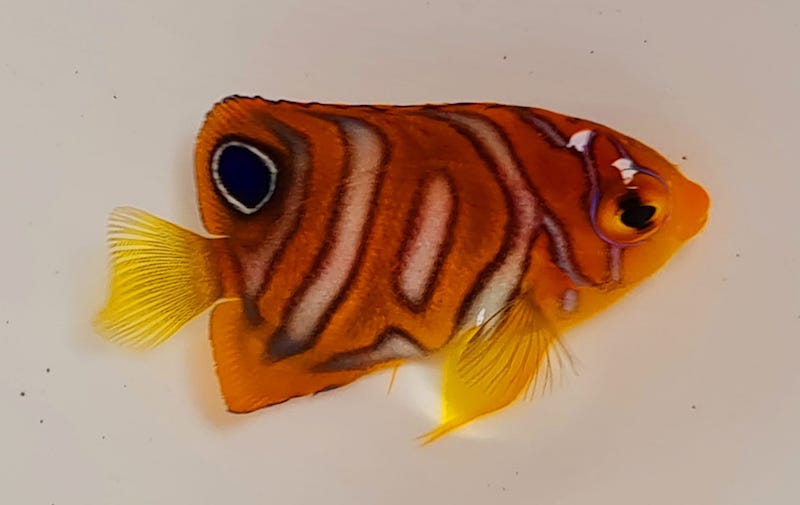
One tantalizing detail about these tank bred regal angelfish is how mis-barred their stripes appear which could develop into the kind of exciting scribbled pattern that connoisseurs are always on the lookout for in wild fish. While most of the fish are quite bright and vivid in coloration, Bali Aquarich has teased an image of at least one specimen sporting a darker overall appearance which we can only hope might grow into the even rarer ‘black’ regal angelfish of which we’ve only seen a couple examples but could be the start of a whole new lineage of domesticated regal angelfish.
We’re getting a little ahead of ourselves with the black regal angelfish but the misbar nature of the ‘regular’ angelfish is probably locked in as we would be very surprised if even half of them develop into normal P. diacanthus. It’s hard to say which ones will grow into super scribbled fish with broken, branching stripes on both sides but it does appear like most of them do exhibit a degree of unusual patterning. Like with all new fish and especially captive bred angelfish the first wave command a hefty premium however their provenance should make them very hardy fish with great appetites and a fun surprise appearance to unwrap over years as the fish grow and mature.


